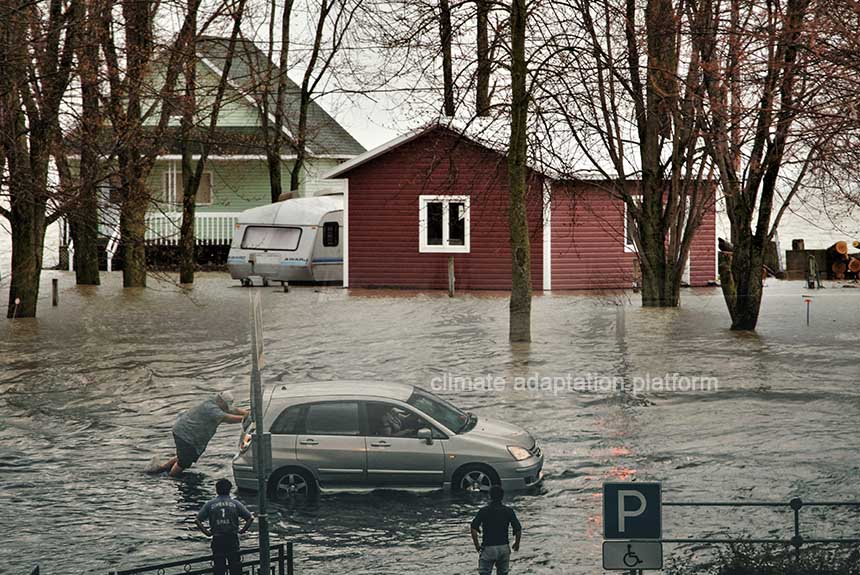January 27 marks the first anniversary of the 2023 Auckland floods. Experts estimated that half a year’s worth of rain was dumped in just one day, resulting in one of the most disastrous flooding the city had seen.
The NZ Herald reports that the 27 January 2023 flood swamped thousands of homes and businesses, killed four people, and caused more than 2000 slips, affecting the city’s transport and water networks, while the floods closed significant highways and Auckland Airport.
The government has also earmarked NZ$2 billion in funding for recovery projects, which included plans to buy about 600 flood-damaged homes. Private insurers have also paid $1.5 billion in 50,000 insurance claims.
Should this 1-in-100-year storm event happen again, it could impact about 50,000 city properties lying in overland flow paths and flood plains, says Nick Vigar, head of planning for Auckland Council’s Healthy Waters department.
A new report from the New Zealand Institute for Economic Research (NZIER), an independent economic consultancy published in January 2024, advocates for incentivising resilience to climate change by individuals and businesses in New Zealand.
NZIER Economist Roshen Kulwant and Michael Bealing write, “Investment in resilience to this damage and expedient recovery could result in savings. However, the cost-effectiveness and efficiency of investing in resilience are not guaranteed, and a trade-off must be considered”.
“Economics tells us that we should invest in damage avoidance until the cost of damage avoidance exceeds the cost of the avoided damage. Investing in resilience is similar to this approach,” they added.
According to the report, 2023 has brought one of the country’s most significant climate-related disasters. Between January 2023 and September 2024, the total insured damage from climate-related disasters is estimated at $3.56 billion across just under 120,000 claims; most of this cost comes from Auckland flooding last year and Cyclone Gabrielle at NZ$1.84 billion and NZ$1.65 billion, respectively. A third of physical damage from both events, equivalent to NZ$2.3 billion, is uninsured.
Following these two major climate-related events, the government announced a new land categorisation system being implemented in impacted regions.
The government placed a categorisation of areas affected between 1 and 3. With Category 3, “as a situation where the risk of future severe weather events cannot be sufficiently mitigated, and some land use may remain acceptable, but the risk of injuries or death is considered too high to justify residential land use, of the areas affected.”
As a result, IAG New Zealand, the largest general insurance company in New Zealand, declared they would stop offering insurance cover to arrested properties in the Category 3 areas in response to the Government’s Land Categorisation Framework.
The report says that assets that are not insured will create an “insurance gap”, the difference between total losses and insured losses. It reveals that “with private insurers already retreating from areas with high risk and climate-related disasters predicted to become more frequent and severe, the ability of governments to pay for damages is uncertain.”
The report also adds that “all of this leaves a question mark over the government’s role in compensating for economic losses from climate disasters.”
Though the government has offered various support packages at both central and local levels, the funding only represents between 13% and 20% of damage to public infrastructure. It does not take into account broader damages.
The report further states that the government has a crucial role in communicating risk information in a transparent and accessible manner and recommends a national framework on how to do this.
NZIER Economists and writers Kulwant and Bealing suggest that the government adopt the ACTA framework, which stands for Avoid, Control, Transfer, and Accept, which is more efficient than the PARA (Protect, Avoid, Retreat, and Accommodate) framework, that the previous governments used in its national adaptation plan.
According to economists, the PARA framework has a significant weakness: it does not “explicitly address the transfer or sharing of risk, which is what the insurance model does.”
The report identifies barriers and responses to climate adaptation and investment in resilience. It cites examples of how other countries are incentivising investment in resilience.
You can download the NZIER Insight by browsing the link in the “Source” section below.
Source:
Incentivising resilience to adverse climate change events – NZIER Insight 109 (2024, January 30). NZIER. Retrieved from https://www.nzier.org.nz/publications/incentivising-resilience-to-adverse-climate-change-events-nzier-insight-109
Leahy, B. (2024, January 27). Auckland Anniversary floods one year on: Could the city cope with another storm like January 27? NZ Herald. Retrieved from https://www.nzherald.co.nz/nz/auckland-anniversary-floods-one-year-on-could-the-city-cope-with-another-storm-like-january-27/4X4TB4UDNRA7FOAKOBN2QPJ7FA/
RNZ. (2023, August 6). Auckland Floods: Council launches tool for residents to check flood risk. NZ Herald. Retrieved from https://www.nzherald.co.nz/nz/auckland-council-launches-tool-for-residents-to-check-flood-risk/BP6BUNCCXVHJFNMVRBL6OIECSI/
NOTE: The image in this post was created to illustrate flooding and is not an actual photo taken during the Auckland Anniversary flood.



Leave a Reply